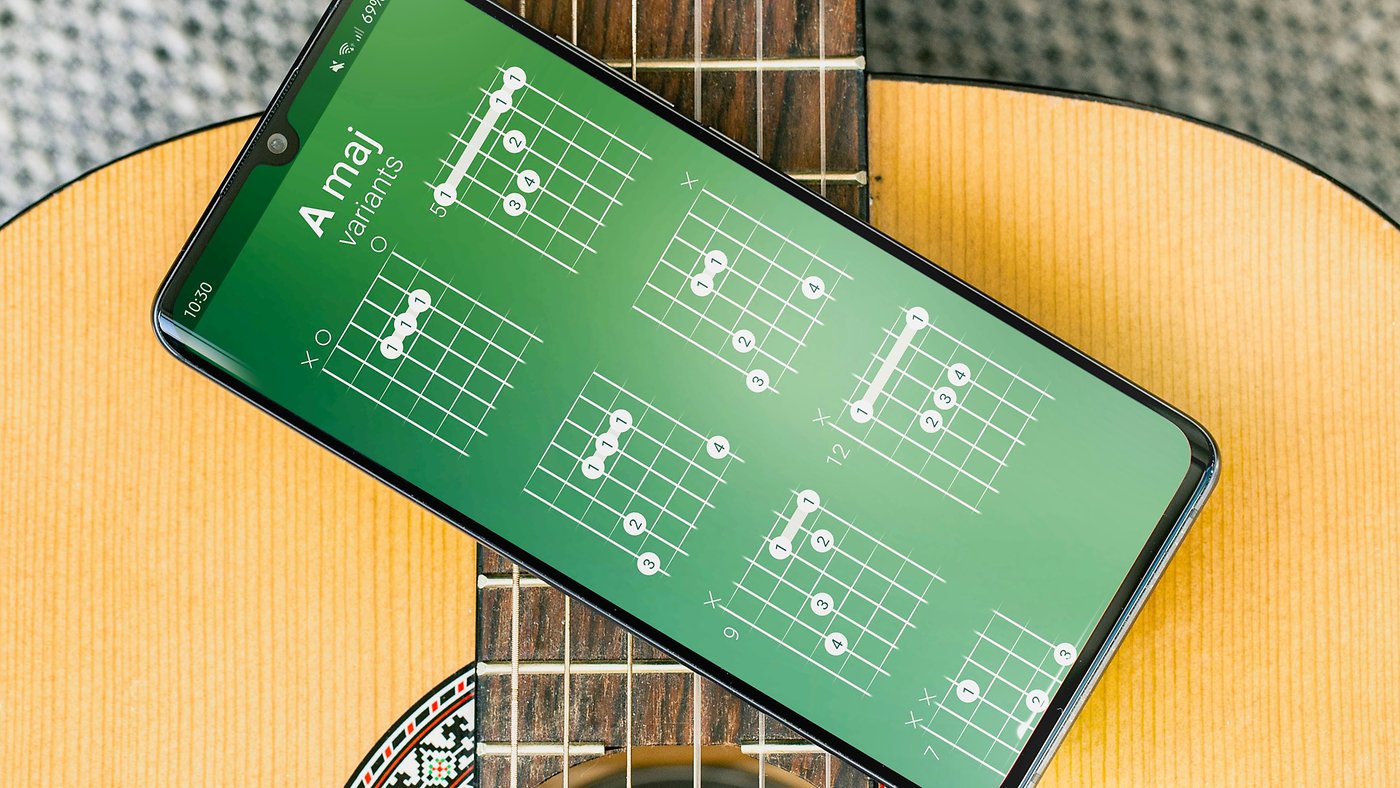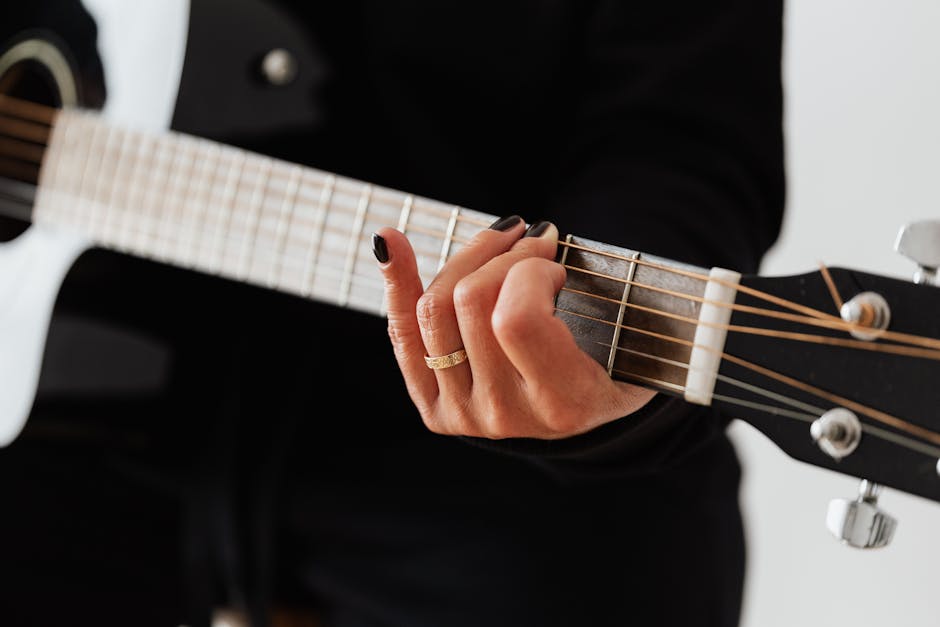Have you ever tried to impress your friends with a killer guitar solo, only to end up sounding like a cat being strangled? Fear not, aspiring rock gods and goddesses, for we are here to help you master the essential intermediate guitar techniques that will elevate your playing from pathetic to prestigious. So grab your axe and get ready to shred like never before, because with our expert guidance, you’ll be melting faces in no time.
Contents
- 1 Unlocking the Power of Barre Chords for Versatility
- 2 Navigating the Fretboard with Scale Integration
- 3 Refining Strumming Patterns for Dynamic Rhythmic Expression
- 4 The Art of Fingerpicking: Enhancing Melodic Complexity
- 5 Incorporating Hammer-Ons and Pull-Offs for Fluidity in Play
- 6 Mastering Bends and Vibrato for Emotional Impact
- 7 Exploring Advanced Chord Voicings for Rich Harmonies
- 8 FAQs
- 9 Rock On, Guitar Enthusiasts!
Unlocking the Power of Barre Chords for Versatility
So, you’ve mastered the basic chords on your guitar and you’re feeling pretty confident in your skills. But wait, there’s more! Barre chords are like the secret weapon of guitar players everywhere, unlocking a whole new world of versatility and sound. Let’s dive into how you can take your playing to the next level with these powerful chords.
First off, let’s talk about flexibility. Barre chords allow you to move up and down the neck of your guitar with ease, opening up a whole range of new possibilities for your playing. No longer are you bound to the open chords in the first few frets – with barre chords, the world is your oyster!
Next, let’s chat about tone. Barre chords have a rich and full sound that can add depth and dimension to your playing. Whether you’re strumming out some funky chords or picking out a melodic solo, barre chords will take your sound to the next level.
And let’s not forget about the cool factor. There’s something undeniably badass about busting out a tricky barre chord during a jam session. It’s like flexing your musical muscles and showing off your skills. So, grab your guitar, practice those barre chords, and get ready to impress everyone with your newfound versatility and power!

Are you tired of feeling lost on the fretboard like a squirrel in a maze? Well, fear not my fellow guitarist, because I am here to guide you through the intricate world of scale integration like a GPS for your fingers!
First off, we need to understand the basic building blocks of scales. Imagine scales as the hidden treasure map to musical greatness, with each note as a clue leading you to the ultimate prize – killer solos and mind-blowing riffs! By familiarizing yourself with the patterns and intervals of scales, you’ll be able to navigate the fretboard with confidence and precision.
Next, let’s talk about integrating scales into your playing. Think of it as adding hot sauce to your favorite dish – it spices things up and takes your music to a whole new level. Experiment with blending different scales together to create unique and dynamic sounds that will make your audience go wild!
So, grab your guitar, buckle up, and get ready to embark on an epic journey of fretboard exploration. With a dash of creativity, a sprinkle of practice, and a pinch of determination, you’ll soon be shredding like a rock god and unleashing your full musical potential. Happy navigating!
Refining Strumming Patterns for Dynamic Rhythmic Expression
So you’ve mastered the basics of strumming patterns and now you’re ready to take your rhythmic expression to the next level. Well, get ready to refine those skills and add some serious flair to your playing!
First things first, let’s talk about dynamics. Rather than just strumming all the strings with the same force, experiment with playing some strings louder and others softer. This will add depth to your sound and make your playing more interesting.
Next, try incorporating accents into your strumming patterns. By emphasizing certain beats, you can create a more dynamic and engaging rhythm. Don’t be afraid to get a little flashy with it!
And finally, don’t forget about syncopation. This is when you accent off-beat notes, creating a more complex and interesting rhythmic pattern. Play around with different variations and see what sounds best to you. Remember, practice makes perfect!

The Art of Fingerpicking: Enhancing Melodic Complexity
Fingerpicking is a beautiful technique that can add a whole new dimension to your playing. By using your fingers to pluck the strings instead of a pick, you can create a more intricate and nuanced sound. Plus, you get to feel like a fancy classical guitarist while you’re at it.
But why stop at simple melodies when you can take your fingerpicking to the next level? Enhancing the melodic complexity of your fingerpicking patterns will not only impress your friends and family, but it will also challenge you to push your skills to new heights.
Here are some tips to help you master the art of fingerpicking and enhance the complexity of your melodies:
- Experiment with different fingerpicking patterns: Don’t be afraid to try out new patterns and techniques to see what works best for the melody you’re trying to create.
- Incorporate harmonics: Adding harmonics to your fingerpicking can create a dreamy, ethereal sound that will take your melodic complexity to the next level.
- Use dynamic contrast: Play around with dynamics to create more depth in your melodies. Try playing some parts softly and then really digging in on others for a more dramatic effect.

Incorporating Hammer-Ons and Pull-Offs for Fluidity in Play
So, you’ve mastered the basics of playing guitar and now you’re looking to take your skills to the next level. One technique that can really add fluidity and flair to your play is incorporating hammer-ons and pull-offs. These simple yet effective techniques can make your playing sound smoother and more professional. Here are some tips to help you master them like a pro:
First off, make sure you’re using the right finger placement. For hammer-ons, use your index or middle finger to quickly hammer down onto the fret without plucking the string. For pull-offs, lift your finger off the fret quickly to create a smooth transition between notes. Practice moving between the two techniques seamlessly to really enhance your sound.
Another tip is to vary your dynamics when using hammer-ons and pull-offs. Experiment with different levels of pressure when hammering on or pulling off to create a more dynamic and interesting sound. Don’t be afraid to really dig in and hammer on hard for a more aggressive sound, or pull off gently for a softer, more melodic tone.
Finally, don’t forget to incorporate hammer-ons and pull-offs into your solos and improvisations. These techniques can add a lot of depth and complexity to your playing, so don’t be shy about using them to spice up your solos. Mix them with bends, slides, and vibrato to create a unique and dynamic sound that will really impress your audience. So go ahead, experiment with hammer-ons and pull-offs and watch your playing reach new levels of fluidity and finesse!
Mastering Bends and Vibrato for Emotional Impact
If you want to bring your guitar playing to life and make your audience feel every note you play, mastering bends and vibrato is the way to go. These techniques not only add depth and emotion to your solos, but they also give your playing that extra punch that will leave your listeners in awe.
When it comes to bends, remember to:
- Use your ear to bend the note to the exact pitch you desire
- Practice bending with different fingers to develop strength and control
- Experiment with bending on different strings and frets to add variety to your playing
As for vibrato, here are some tips to help you master this expressive technique:
- Start by practicing slow, controlled vibrato before speeding up
- Experiment with different widths and speeds of vibrato to find your own unique style
- Use your wrist or fingers to create vibrato, depending on your preference and comfort
Remember, mastering bends and vibrato takes time and practice, so don’t get discouraged if you don’t nail it right away. Keep experimenting, keep practicing, and most importantly, have fun with it!
Exploring Advanced Chord Voicings for Rich Harmonies
So you think you’ve mastered basic chord voicings, huh? Well, get ready to take your harmonic game to the next level with some seriously advanced voicings. These chord shapes will have your listeners scratching their heads in awe at the richness and complexity of your harmonies.
First up, try experimenting with some extended chords. Think beyond your standard major and minor triads and throw in some 7ths, 9ths, 11ths, and even 13ths. These added notes will give your chords a lush, jazzy sound that will make your playing stand out from the crowd.
Next, don’t be afraid to get a little dissonant. Try incorporating some tritones or other slightly off-kilter intervals into your chord voicings. This will add a touch of tension and intrigue to your harmonies, keeping your listeners on their toes.
And finally, don’t forget about inversions. By rearranging the order of the notes in your chords, you can create some truly unique and unexpected voicings. Experiment with different inversions until you find the ones that create the richest, most interesting harmonies for your playing.
FAQs
What is the best way to improve my bending technique on the guitar?
Well, besides wishing really hard and hoping your strings magically bend themselves, good ol’ practice is key here. Start slow and focus on getting that pitch just right. And remember, it’s all in the fingertips!
How can I make my hammer-ons and pull-offs sound more seamless?
Think of hammer-ons and pull-offs like a smooth criminal – they should blend in seamlessly with the notes around them. Practice transitioning between notes with finesse, and soon you’ll be hammering and pulling like a pro.
What’s the secret to nailing those tricky sweep picking arpeggios?
Ah, the elusive art of sweep picking. It’s all about that sweet sweet technique – keep your picking hand moving smoothly and evenly across the strings, like a graceful dancer gliding across the stage. With practice, those arpeggios will be music to your ears.
How can I improve my alternate picking speed and accuracy?
Like a well-oiled machine, alternate picking requires precision and efficiency. Start slow and gradually increase your speed, focusing on clean, crisp movements. And remember, Rome wasn’t built in a day, so be patient and keep on pickin’!
What’s the best way to master chord transitions for more complex songs?
Ah, chord transitions – the bane of many a guitarist’s existence. Practice, practice, practice is key here. Start by breaking down the transitions into smaller parts and gradually build up speed. With time and dedication, those complex chord changes will become second nature.
Rock On, Guitar Enthusiasts!
Congratulations on embarking on your journey to mastering essential intermediate guitar techniques! With diligence, dedication, and a sprinkle of creativity, you’ll soon be shredding like a rock star. Remember, practice makes perfect, but a little bit of rock and roll spirit never hurt anyone. Keep strumming, keep picking, and most importantly, keep rocking on!



